The Complete Provence Travel Guide
Provence, France
The South of France - French Riviera & Provence
☼
How long you’ll need in provence
1-2 weeks
☼
Best time to visit provence
March-October
☼
Closest Airport(s) to provence
Paris, Nice, Marseille
☼
Closest Train Station(s) to provence
Aix en Provence (TGV), Avignon, Marseille
☼
Do you need to rent a car in provence
Required
☼
Where to stay in provence
☼
Things to do in provence
Villages, Wine Tastings + Lavender fields
☼
Where to eat in provence
Cafes, Michelin Restaurants + Grocery Stores
☼
What to pack for provence
French Essentials
☼
Souvenirs to bring home from provence
Soaps, Jams, Arts and More
☼
What to budget for in provence
Transportation + Food
☼
FAQs
Bonjour
If this is your first time on The Weithouse - welcome! My name is Taylor and I’m the girl behind the screen and camera bringing you resources to help you plan the trip of your dreams.
In this Provence Travel Guide, I will be sharing our experience traveling to the Provence region of France as well as our tips on logistics, lodging, budgeting, packing and more! We’ve now visited the Provencal regions three different times and the area is one of my favorites in all of Europe.
If you are needing a trip to reset, to restore broken relationships, to enjoy being with the love of your life, to spend time with the Lord, to creatively retreat, to write, to paint, to explore, to learn, to relax - there’s no better place to do those things than in the Provençal region of France.
Location: FRENCH RIVIERA + PROVENCE
Where is Provence?
Provence is a portion of the South of France, which is quite literally, the South of France, meaning it is not a destination in and of itself, but rather, an entire region. The scale of the region makes it a bit overwhelming when trip planning, especially if you’re used to planning based on visiting a single city (for example, planning a trip to Paris).
That being said, one of the most helpful ways to make the region more digestible is to break it into two sub-regions: The French Riviera & Provence.
The French Riviera: The French Riviera is made up of the Mediterranean coastline including popular summer destinations such as St. Tropez, Cannes, and Nice. If you are someone who craves days on the beach, boat rides in the Mediterranean and views of the sea, this is the region for you.
See our list of the best hotels in the French Riviera.
Provence (Luberon): Provence, in contrast to the French Riviera, is mostly landlocked, and is a region for the slow-speed, countryside-loving traveler. It is a landscape of rough rocky mountains hiding vast valleys of abundant crops. In the Provence region, you’ll find endless fields of wild grasses, rolling hills of lavender and vineyards, Neolithic and Roman villages perched on hilltops and stone building façades covered in jasmine and ivy.
HOW LONG YOU’LL NEED in Provence
With both Provence and the French Riviera being sub regions of the South of France, you could spend months, even years, exploring all the area has to offer.
Provence alone has over 800 towns and villages! That being said, this is not the trip to cram in as much as possible and you’re going to want to give yourself ample time to both explore and relax.
We’ve now explored the region for a total of 15 full days (over three separate trips), which has given us time to explore 12 villages while immersing ourselves in the beauty if the natural surroundings and the culture.
How much time you need in Provence will depend on a variety of factors, but based on my experience visiting the region, I would opt for either one or two fulls weeks.
If you’re coming from the United States to the South of France, I would highly recommend 1-2 Full Weeks in just the Provence region. At minimum, give yourself 7 full days to see Provence. And if you want to see both Provence and the French Riviera in one trip to make it a full South of France tour, I’d recommend a minimum of 2 weeks.
If you’re looking to take a trip to the South of France from Paris, you can easily do it over a long weekend. Since you have more accessibility to the region, I’d recommend picking one train station (Aix TGV, Marseille, Avignon, or Nice) and planning a long weekend around that specific area.
If you want to do a full tour of the South of France, inclusive of both the French Riviera and Provence, then you’ll want to give yourself two weeks or more TRAVEL TIME.
the BEST TIME TO VISIT Provence
When is the best time to visit Provence? Similar to determining the best time to visit Paris, I don’t think there is technically a bad time to visit the region as each season is going to have a unique experience and landscape to offer.
That being said, the Provençal region is seasonal, meaning that in the months outside of March-October, restaurants close, shop owners leave, hotel rooms are unavailable, and you might be left with nowhere to eat and nothing to do.
Summer in Provence
Summer is the best season to visit Provence to experience all of the things that make Provence such a special part of the world. The most popular months to visit Provence are July and August, however June is also an incredible month to visit without all the crowds (we first visited the region in late June).
What is Provence like in June? June in Provence brings warm temperatures in the day and lovely cool evenings, jasmine covered buildings filling the air with sweetness, lingering red poppies, the beginning of lavender blooms, a buzzing of bees and moths, and less crowds than the latter summer seasons.
What is Provence like in July? July is the month to visit Provence if you’re looking to see the lavender in its full bloom. In order to see the Provencal lavender at its peak, be sure to visit either the first or second week of July. In addition to the world-famous lavender in bloom, July in Provence brings warm temperatures, local produce in abundance (such as melons and cherries and apricots), and fields of bright yellow sunflowers standing tall towards the sun.
What is Provence like in August? August is peak European vacation season meaning that the region will be bursting with European tourists and prices of accommodations will increase due to demand. The lavender will be ready to harvest (or already have been harvested), and the temperatures will be their warmest of the entire year.
Spring in Provence
On our most recent trip to the region, we visited Provence at the end of March/early April. During that trip, we learned that the beginning of the season in the region normally kicks off around Easter weekend and is celebrated with fairs and markets across the villages.
Provence in April brings its own sort of beauty, with endless fields covered in wildflowers, vines just putting out their first green leaves, and a seas of fruit trees covered in white blossoms. The weather in Provence in April was much cooler than the summer months, making Spring in Provence a lovely time to visit if you prefer cool temperatures over warm ones.
CLOSEST AIRPORT(S) to provence
Paris (CDG): Charles de Gaulle is the furthest airport from Provence but is the easiest to get a direct flight to. To get to Provence from Paris, you can either rent a car and make the 7-hour drive south or take the train from Paris to either Aix en Provence or Marseille. For our trip, we decided to make the 7-hour drive down from Paris, which I would highly recommend against. Here’s why:
Attempting to drive seven hours after an overnight flight is really challenging.
The roads have tolls, and it cost us €60 to get from Paris to our hotel in Provence.
The long drive means you have to sacrifice both a day at the beginning and end of your trip to be in the car.
You’re going to be doing a lot of driving in Provence, meaning you don’t want to add any unnecessary hours of driving.
Our recommendation is to take the train south, which will take half the time (3 hours) of driving. Book train tickets here.
Marseille (MRS): Marseille Provence Airport is a short 1-hr drive from the heart of the Provence region. The drawback of this option is that there aren’t direct flights from the US to Marseille, so you would need to connect in CDG (Paris).
Nice (NCE): Nice Côte d'Azur Airport is a third option and is perfect for if you’re looking to take a full South of France vacation. There are seasonal direct flights from the US to Nice.
sign up for going to save up to 90% on flights.
Closest Train Station(s) to provence
Aix en Provence (TGV): This is the easiest train station for accessing Provence. It’s a 20-minute drive outside of Aix en Provence, and is an easy spot to pick up your rental car. The direct train from Paris takes three hours. Book your tickets from Paris to Aix en Provence.
Avignon: Depending on where your hotel is, another good option is the Avignon train station. It’s normally on the same line as the Aix en Provence train and stops one station prior. The direct train from Paris takes a little less than three hours. Book your tickets from Paris to Avignon.
Marseille: You can also take a direct train from Paris to Marseille, which takes a little over three hours. This is a good option if you want to start your trip by hitting a few of the coastal towns before heading north to the Luberon region of Provence. Book your tickets from Paris to Marseille.
CAR RENTAL in provence
Unlike much of Europe, once in Provence there is no public transportation to help connect you from village to village If driving internationally sounds stressful, it’s very straightforward and here’s everything you need to know about driving in France:
You will need an international driver’s license. You can get one through AAA here.
In France, they drive on the same side of the road as in the United States (this might be obvious to you, but you’d be surprised by how many people ask me this question).
Manual cars are the default and cheaper than the automatic alternative. However, if you can’t drive manual, just make sure to select an automatic option when booking (manual will be the default).
Gas is expensive, so make sure to budget for it. If there is a hybrid can rental available that is your best option (it will use very little gas throughout the duration of your trip).
You will have to parallel park.
Once off the highway, the streets can get really narrow.
The road signs are self-explanatory, even if you don’t speak any French.
The speed limit is in kilometers, but your rental car’s speedometer will also be in kilometers, so it’s apples to apples.
Avoid booking an electric vehicle if possible (we just learned this lesson). Although charging stations are available, they are not in abundance and finding one can add unnecessary stress to your trip. (They are, however, the cheaper automatic option)
WHERE TO STAY in provence
Most everything in the Luberon region of Provence is driving distance from each other, so I would recommend staying in one place while in the region. I prefer staying in one place in order to become more familiar with whatever village we are close to and to build relationships with the hotel staff or Airbnb host.
Below are a few properties we’ve either stayed at ourselves, or that I’ve visited and believe would be good hubs for your travels to Provence.
For more places to stay in Provence, you can check out our list of the Prettiest Hotels in Provence or our roundup of the Best Airbnbs in the South of France.
Le Galinier: This is where we spent our week stay in Provence in 2021, and we loved it so much, we opted out of a day in Paris to spend another night on the property.
Le Galinier Villa, which I’ve reviewed in full over on this post, is an 18th-century bastide, or large house, located on the edge of Lourmarin, France. It features the main house, two separate apartment houses (one that was once a stable and the other a chicken house), and a pool. It’s beautifully landscaped with original ponds, wild grasses and flowers, a pigeonry and ancient olive trees.
The property is a 2-minute walk from Lourmarin (our favorite village in the region) and serves as a wonderful home base for exploring the other villages. It’s also great for traveling parties of different sizes, with rooms and apartments to accommodate varying needs.
everything in Provence is within driving distance, so IT’s BEst to stay in one place during your trip to help you get a feel for the local village, relax and build relationships with your Airbnb or hotel host
Le Moulin Lourmarin: During our stay, we had the privilege of exploring Le Galinier’s sister hotel, Le Moulin Lourmarin, which is housed in an old building within the village of Lourmarin. Le Moulin is a traditional hotel that has been newly renovated to welcome guests. The hotel features various lounge areas, a bar, and a restaurant onsite. You can also find more information on Le Moulin Lourmarin in this post
Capelongue: Near the village of Bonnieux is another beautiful property for your Provence trip: Capelongue. The hotel, a sister to both Le Galinier and Le Moulin Lourmarin, is larger than Le Galinier and has a more upscale, resort feeling. The beautiful property is scattered with lavender, has two pools, and has an amazing view over Bonnieux and the Luberon region. We booked an afternoon lunch at one of the hotel restaurants, La Bergerie, and feasted on delicious French cuisine as we enviously watched the local guests sunbathe and take a dip in the pool. There is also a Michelin guide restaurant onsite, La Bastide, if you’re looking for a scrumptious French dinner with a view.
THINGS TO DO in provence
A trip to the South of France and Provence is unique in that it’s not one full of famous landmark hopping. Instead, you will find yourself slowly exploring old hilltop villages, piddling through shops and local markets, and driving through the breathtaking landscape. I recommend leaving your itinerary open to allow for slower days, but here are a few things you can build your days around.
EXPLORE LOCAL TOWNS + VILLAGES
The Provence region has over 800 villages, making it impossible to see them all in one trip. Below will highlight our favorite or most popular villages within the region which should help guide your itinerary.
The villages are normally most lively on their market days (which vary and I’ve included next to each village below), and I would recommend planning your visits around those days. You can bundle a few of the villages in one day by heading to a market at one, grabbing lunch at another and eating dinner at a third before heading back to your Provence hotel or Airbnb.
The villages are quite small meaning you can walk stroll through them at a leisurely pace and then decide how much time you want to spend there.
There is always public parking on the outskirts of the villages, which I recommend using rather than trying to park within the villages on the teeny narrow streets!
Lourmarin (Friday Market): Known as one of the most beautiful villages in France, Lourmarin has been settled for over a thousand years and though small, boasts endless Provençal charm and even its own chateau, Château de Loumarin. Strolling through you’ll find traditional curbside French cafes, boutiques, antique shops, art galleries and buildings covered in ivy. The market was our favorite from the trip and after exploring over 12 villages in the region, it’s easily our favorite (and most beautiful).
You can read our complete guide to Lourmarin here.
Bonnieux (Friday Market): A 17-minute drive from Lourmarin and you’ll arrive to the hilltop village of Bonnieux. Bonnieux’s weekly market is also on Friday, so it’s easy to visit both villages in one day.
I’d also recommend trying to visit the village around sunset. You can climb to the top of the village to L'église Vieille, a twelfth century church, and arrive to stunning vistas overlooking the valley below. The church itself is open in Summer and at Christmas is home to a nativity scene.
If you want to stay in Bonnieux, we recommend this stunning hotel with amazing views.
Apt (Saturday Market): If you want to visit the biggest market in the region, plan to visit Apt on its market day, Saturday. The market has been happening for around 900 years and features over 300 vendors selling anything and everything. At the market, you can find baskets, breads, soaps, olive-made items, lavender, produce, linens and clothing.
The market happens year round, and you’ll want to arrive early in order to find parking. The market lasts until around lunch time and sprawls throughout the center of Apt. You can essentially follow the stream of tents to see everything the market has to offer.
During our strolls through the market, we also came across a handful of cute antique stores and boutiques, and I recommend popping in to: La Maison d’Ines and Odette.
If you want to stay near Apt, we’ve been eyeing this stunning villa, perfect for a family vacation in seclusion.
Roussillon (Thursday Market): Famous for its ochre-colored buildings and surrounding ochre mines, the village of Rousillon is worth a visit if only to see how the buildings differ from the surrounding villages. The village itself is a great spot to buy souvenirs (we brought home lots of goodies from Maison Bremond 1830) or grab a delicious lunch. You can also take a leisurely 30- or 60-minute hike through the Ochre Trail, just off the village.
Lacoste (Tuesday Market): A medieval village perched on a hilltop, home to artists and SCAD (Savannah College of Arts + Design) students. We came here on market day and thought it was a little underwhelming, but it ended up being one of our favorite villages in the Luberon nonetheless! It’s a pretty sleepy village but is very picturesque and a great option for a morning or evening photoshoot.
Gordes (Tuesday Market): The most visited “hill village” in the region offering winding cobblestone streets and breathtaking views of the valley below. In close proximity to the famous Senaque Abbey (a lavender hotspot, more details under the lavender section), and also a village bursting with shops to explore. Come here around sunset to get amazing photos and golden views of both the village and the valley below.
If you want to stay in Gordes, we’ve been eyeing this beautiful, character-filled property with a courtyard and pool.
Aix en Provence: (Daily Markets, except Sunday): Aix en Provence is one of the larger villages in the region and is a university town bursting with students, restaurants and daily markets. On Tuesdays, Thursdays and Saturdays, you can stroll through both the Marché alimentaire (food market) and the Marché vestimentaires (Clothing, Arts & Crafts and Flea Markets), while on Wednesdays and Sundays you will find the Marché aux fleurs (flower market).
On our 2022 August trip, we opted to stay in the center of Aix en Provence as our home base since we didn’t make it there the first time. We booked a stay at “Le Studio” an adorable and intentionally designed Airbnb, which was central to everything we needed during our stay.
After having stayed in both the more rural part of Provence (at Le Galinier) and in the city center (at Le Studio), I would definitely recommend staying in a smaller village versus staying in Aix en Provence. Although we thoroughly enjoyed our Airbnb, Aix en Provence itself was a little too bustling for us, especially since we were craving the countryside and its nature. However, Aix en Provence is still a really central option for visiting the region, especially if you’re looking to hit a few of the coastal towns as well, such as La Ciotat or Cassis.
If you do plan to visit Aix during your trip, be sure to check out the cute Mana coffeeshop (we came here every day), as well as grab dinner at the delicious Le Poivre D’Ane.
Saint-Remy-de-Provence Market Day: (Wednesday Market): A little over an hour’s drive from Aix en Provence is the charming village of Saint-Remy-de-Provence. It is further west in the region, sitting within the Alpilles mountains, and is most famous for it being the backdrop for some of Vincent Van Gogh’s most famous works (such as Starry Night), when he was a patient at St. Paul’s Mausoleum. You can spend the day wandering through the village and its shops, and also take a quick tour through the Mausoleum.
La Ciotat (Evening Market - From July 1st to August 28th 2022): If you want to see the coast during your trip to Provence and you have the time, drive South from Aix en Provence and you’ll hit the village of La Ciotat. It is a sleepy port village with sea washed buildings and sun tanned beach lovers. Walking distance from the village is Calanques National Park, which is worth visiting for its beautiful cliff lined beaches. Even if you’re only there for the day, be sure to visit Calanques du mugel et De Figuerolles, one of the most beautiful hidden beaches I’ve ever seen.
If you’d rather spend more time in La Ciotat, you can book a stay at the adorable Airbnb within the village, Maison Acacia.
L’Isle-sur-la-Sorgue (Thursday & Sunday Market): L’Isle-sur-la-Sorgue is considered the Venice of Provence, with the village being broken into small islands by the River Sorgue that runs through it.
The village is known for being the second largest antique hub in France (second to Paris) and half of the town is dedicated to selling said antiques. The permanent antique shops are open to visitors on the weekends. If you want an even greater antique experience, visit L’Isle-sur-la-Sorgue on a Sunday for the weekly brocante (flea market) selling antiques.
Twice a year, in April and in August, the village also hosts an antique fair, Foire de L'Isle-sur-la-Sorgue, which showcases several hundred exhibitors and welcomes over 100,000 people from all over the world. You can find details on the dates of the fair here.
Oppède le Vieux: Perched on a hilltop sits the ruins of Oppède le Vieux. There is a small village that sits slightly below the ruins and the entire area feels like it’s straight out of a story book.
To visit Oppède le Vieux, there is a designated parking lot at the bottom on the hill, and from the parking lot you take an inclined stroll through the little village before heading up to the ruins. It looks steep from below, but the hike up to the top is gentle and worth it to see the ruins up close and the vista from above!
Other than hiking to the top, there isn’t too much else to do in the village, but it’s worth visiting just to experience the sleepy town.
You can read our complete guide to visting Oppède le Vieux here.
Arles (Wednesday and Saturday market): Arles is another “larger” town in Provence and is located in the Bouches-du-Rhône portion of region. The city is known for it’s Roman landmarks (including its own Colosseum), a huge art scene (largely driven by Van Gogh), its annual photography festival and one of the largest Provencal markets in the region.
Arles doesn’t offer the same charm as some of the smaller Provencal villages in this post, but its a wonderful city to visit even just for the day as your driving through the region.
You can find our Arles Guide here.
BOOK A WINE TASTING
The Provence region is bursting with local vineyards, giving you the opportunity to go to a local wine tasting, learn from the winemakers and explore small vineyards within France.
While driving around the region, you will see signs for wineries along the road, identified using a grape symbol, and the majority of the time you can simply drive up and do a tasting. You can also book a private tour at some of the vineyards by calling in advance, and we had a great experience getting a tour of the facility at Domaine de Fontenille (also home to a luxury hotel near the village of Lauris).
You could also book a highly rated wine-tasting tour, like this one that leaves from Aix-en-Provence.
SEE THE FAMOUS Provence LAVENDER + SUNFLOWER FIELDS
Valensole: For planning purposes, the lavender is at its peak early to mid-July, and the sunflowers can be seen in July only. The most famous lavender and sunflower fields can be found in Valensole, however, you can spot fields of lavender throughout the entire region. You will want to visit at sunset (which is pretty late in the summer) to get the picture perfect lighting you see on the internet. Just be warned, you will have a lot of other tourists with you.
Terre Ugo: When we visited the region in August of 2022, we knew that the lavender would no longer be in bloom or would already be harvested. That was pretty much true throughout the landscape (honestly it was a little sad seeing the chopped down fields of lavender). Luckily, I found a lavender farm just 10-minutes from Aix en Provence, where they don’t harvest the lavender until the end of August. The lavender was drying in the field, but was still slightly purple and smelled amazing. We decided to do a beekeeping class with them (all in French, but survived using Google Translate), which was very informative. You can also do a soapmaking workshop, take pictures in their fields or come to an evening dinner on the property. They also make their own essential oils, soaps, and other souvenirs that you can purchase on site.
WHERE TO EAT in provence
Each Provençal villages has plenty of local cafes and restaurants. However, the rural and seasonal culture of the region means these restaurants tend to get pricey, and the meals can add up quickly. Regardless, when strolling through the villages you should still try a couple of the restaurants to experience local and seasonal cuisine as well as local wine. I’ve mentioned a few restaurants we enjoyed within the village section of this post.
For breakfast, you are in France after all, so make sure to participate in the curbside café culture by ordering croissants, and a coffee. For lunch, if you claim to be a “foodie” there are a select few Michelin star and Michelin Guide restaurants in the region, and you can reserve a table for a set menu lunch which will result in a mouthwatering meal at half the price. Finally, to help save on those dinner costs, be sure to stop in at a local grocery store to experience some of the most beautiful produce you’ll ever lay eyes on and to pick up some local fruit, meats, cheeses and even yogurt for evening picnics.
WHAT TO PACK for provence
Comfy shoes: I recommend packing both a comfortable pair of tennis shoes and sandals.
Dresses/light clothes: If you want to blend in, pack your light and airy dresses as that’s what the local French women will be wearing.
Sweater for the evenings: In June, the evenings were still relatively cool (lows of 58F), so be sure to pack a light sweater you can throw on over your dresses in the evenings and mornings.
Camera: This one is obvious, but I get so many questions about cameras and travel, so I always include it in my “what to pack” sections. You don’t have to be a professional photographer to bring a camera for your travels, and Provence is one of the most photogenic places I’ve ever visited! The images in this post were shot on a Canon Mark IV 5D.
Tripod: I always pack a tripod when we travel. It’s the perfect solution for getting romantic couple shots or solo shots, and is also super helpful for shooting in any low light settings.
French phrases book: If you don’t know any French, or need some help remembering along the way, pack a small French phrases book to help you with your greetings and small interactions!
Leave enough space for your souvenirs: More on this in the next section, but trust me, just leave some space.
SOUVENIRS TO BRING HOME from provence
You’re going to need to leave both space in your luggage and funds in your budget to accommodate the plethora of goodies you’ll want to bring back from Provence. When I travel, I’m not huge on spending money on myself, but I always find myself saying “oh we should get this for so and so.” Thus, I always leave room in my bags to bring back books, foods, clothes or anything else I might find during our travels. And of all the places we’ve been, I purchased the most souvenirs in Provence.
Here are some of the things we brought home that I’d keep an eye out for during your Provence travels:
Soaps: can purchase at the markets for really cheap
Lavender: It’s everywhere and in everything (soaps, essential oils, lotions, etc.).
Dresses: French fashion is a thing after all, and you can find great dress options at both the markets and in the local shops.
Straw hats + bags: These can be found at both the shops and markets in the villages.
Art: Can be purchased at the markets or in the different villages.
Jams + Honeys: Can be purchased at the markets or at shops in the villages.
Olive Oil: Can be found at market, at shops, or at local olive oil stores.
Wine: France is known for its wine, and you can purchase wine from grocery stores or even at a local vineyard.
Fleur de Sel: Can be found in local shops or grocery stores.
Antiques: If you plan to visit any antique markets or stores, be sure to leave space for those timeless French goods.
WHAT TO BUDGET FOR in provence
Train tickets from Paris to Aix en Provence will cost you anywhere from €50-€100+ per person one way.
Rental car and gas (gas was more expensive than we expected).
If you decide to drive on the highways, be prepared to pay tolls (depending on how far you are going, they can add up pretty quickly).
Hotels in the region get pricey. If you want to save money on your lodging, try going earlier in the season (i.e. April or May). You can also plan to spend one or two nights at a nicer hotel and then opt for a more affordable Airbnb option for the rest of your stay to help save some funds.
Food, and it doesn’t matter if you’re at a Michelin star restaurant or a pizza shop in the village, the prices aren’t cheap. I mean, you are in France after all, who pride themselves on their food, and you have to pay the price. To give you an idea, most of our dinners for two cost us anywhere from $75-$100 euros. Food was one of our higher expenses from the trip and our recommendation would be to pick a couple of nice restaurants and then do some cooking as well.
All of those other trip expenses like excursions, wine tastings and shopping (especially if you plan to buy things from the markets).
to save money on lodging plan to spend one or two nights at a nicer hotel and then opt for a more affordable Airbnb for the rest of your stay
FAQs
Before closing out this post, I wanted to share some of the FAQs I’ve received about our trip to Provence, France. And if none of your questions are answered by the end of the post, ask it in the comment section at the bottom of this page and I will do my best to answer!
Q: How much of the trip did you plan and how much did you decide as you went?
50/50. Once we decided on the South of France, I picked the hotel I wanted to stay at, which then guided the rest of our trip. Before leaving, I also outlined all of the “things to do” and villages to visit so that I wouldn’t have to do too much research once we arrived. However, I left all of our days open, so we could reference the list and decide how we wanted to spend the next day based on how we were feeling. I don’t believe in a travel itinerary that has every hour accommodated for, because I think that doesn’t leave you with any room for spontaneity or curiosity.
Q: Outfit/shoe recs for a trip like this!
See above “what to pack section.” Oh, and I would avoid packing any shorts to avoid looking like a tourist. Again, when in doubt, pack a dress.
Q: Would a trip like this be “beginner friendly” for those not used to international travel/driving?
Yes and No. You WILL have to drive a car once in the region, and I wouldn’t consider driving in Europe beginner friendly. Additionally, the roads can be extremely narrow and you do have to parallel park. On the flip side, in France they DO drive on the same side of the road as in the US, the road signs are really straightforward, and you can rent an automatic car if needed.
Q: How did you find/pick the town you went to?
I first picked what hotel we wanted to stay at, which inevitably meant we would stay near Lourmarin. I would try and pick an option that is more central to all of the other villages if you’re looking to do more exploring. If you simply want to spend a retreat at your hotel, then location isn’t as important.
Q; Did you drive yourself from the airport to the town?
Yes! We drove 7.5 hours south from Paris to Lourmarin (and then back up again on our last day). We thought it would be fun to do the drive, however, both of us agree that our advice to anyone planning this trip would be to take the train from Paris to Aix en Provence or Marseille. The train is about 3-3.5 hours and will come out pretty similarly cost wise to driving. You could then pick up your rental car in one of the above mentioned places.
Q: Is it hard to get an international driver’s license?
Nope! You can apply through AAA.
Q: How do you figure out what to do and where to stay without a travel agent?
My favorite question :) I know that planning a trip can be really overwhelming, but I truly love to research things, and find deep satisfaction in planning out vacations. I read a lot of other travel blogs to see where there is overlap, I do full searches of hotels and Airbnbs to see which are my favorites, and I start building a google doc with all of the information. At first, I copy and paste everything as is, then once I feel like I have all the information I need, I categorize.
For example, when planning this trip, I was looking at all of the South of France (both Provence and the French Riviera). I dumped all of the information I found into one Google Doc. Then once I was ready, I bucketed the Provence content and the French Riviera content. In doing this, I was able to determine that we wouldn’t have time for both regions and moved all of my French Riviera content to the bottom of the page for future reference.
Q; Is it better to go on the weekend versus weekdays?
I think you can have a good experience in Provence in both the week and weekend. My number one piece of advice would be to figure out which markets you want to visit, and then plan your trip around that date. Again, the Lourmarin Friday market is our favorite, so I always plan to be in the region on Friday morning in order to experience it each time.
Q; How many nights should I spend in Provence vs. Paris (for a week-long trip)?
If you only have a week for both Paris and Provence, I would personally split the time 50/50. Or first figure out the number of things you want to see in Paris and how many days that would require, then see how much that leaves for Provence. I do think it’s worth trying to experience both, if possible, because the two are very different and can help give you a more holistic view of France.
STICK AROUND FOR A WHILE
Need help planning the rest of your trip?
We think you’ll like our other Provence posts, like the Best Hotels in Provence, the Prettiest Airbnbs in the South of France, our experience staying at Le Galinier in Lourmarin, and the guide to our favorite village in Provence: Lourmarin.
We also have guides to other regions of France, like our Complete Guide to Paris and our Normandy Travel Guide.
FOLLOW ALONG
For all of our live travel content and BTS, be sure to follow us on social media. You’ll get to see what our life looks like as expats in Paris and get to virtually come along with us whenever we are exploring somewhere new.








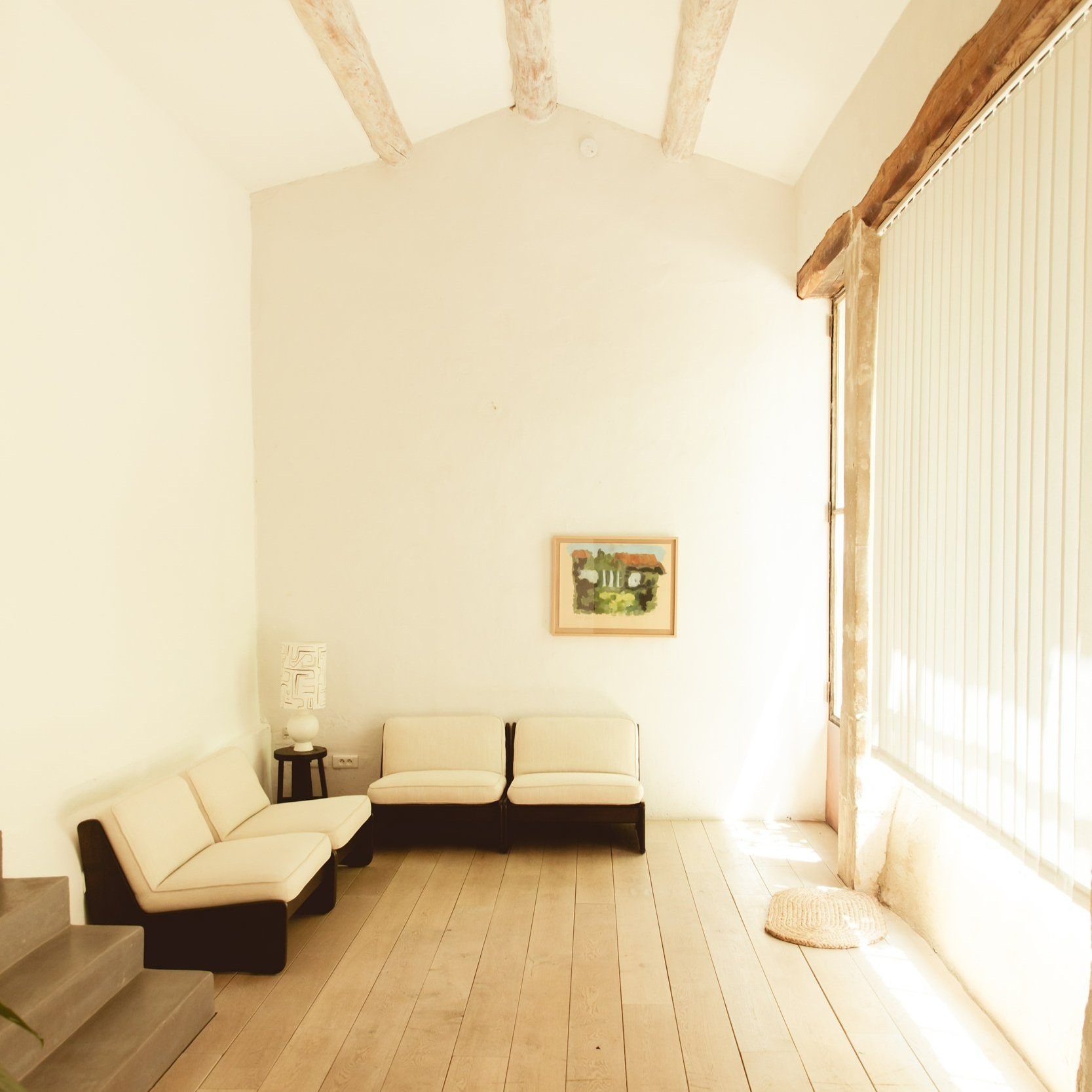
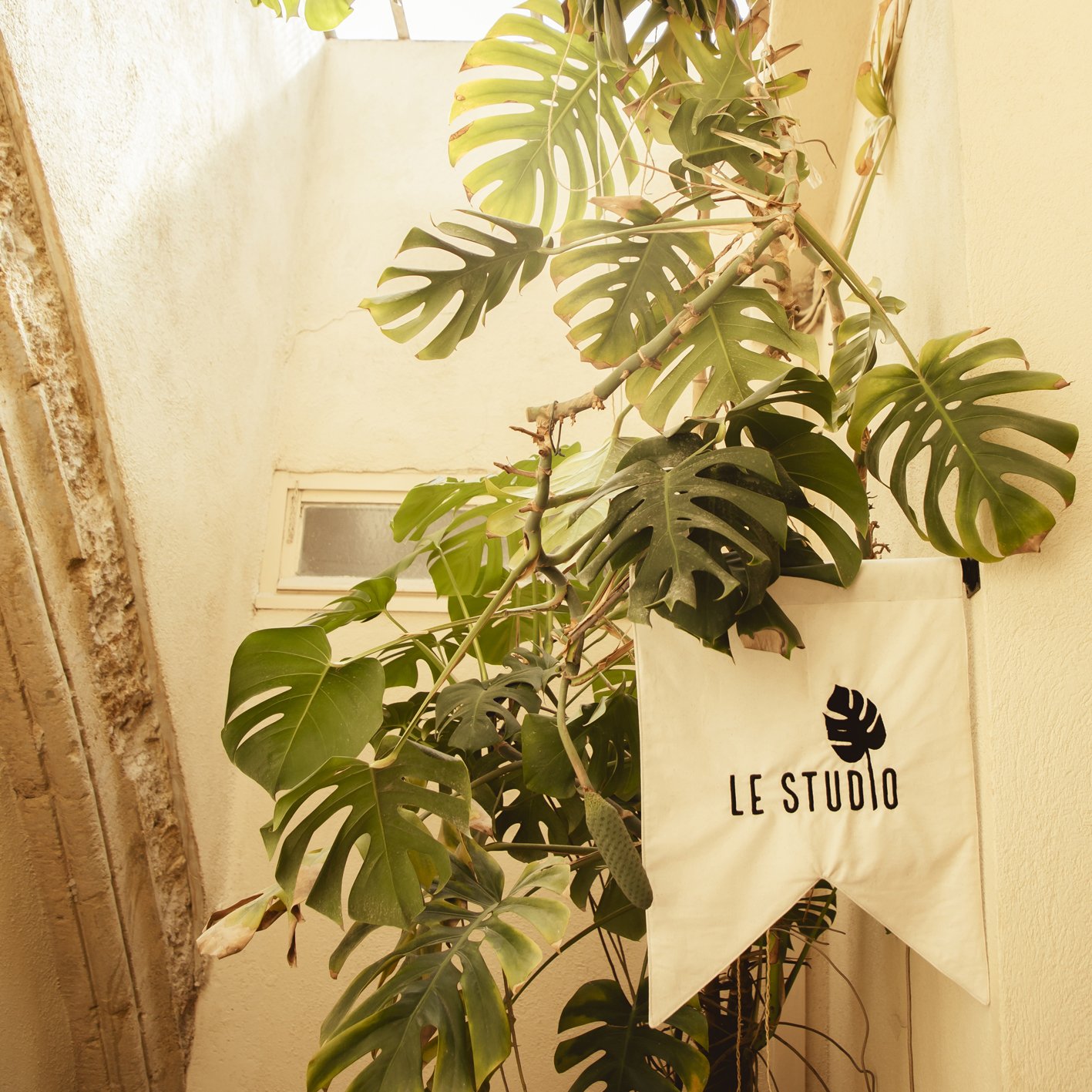
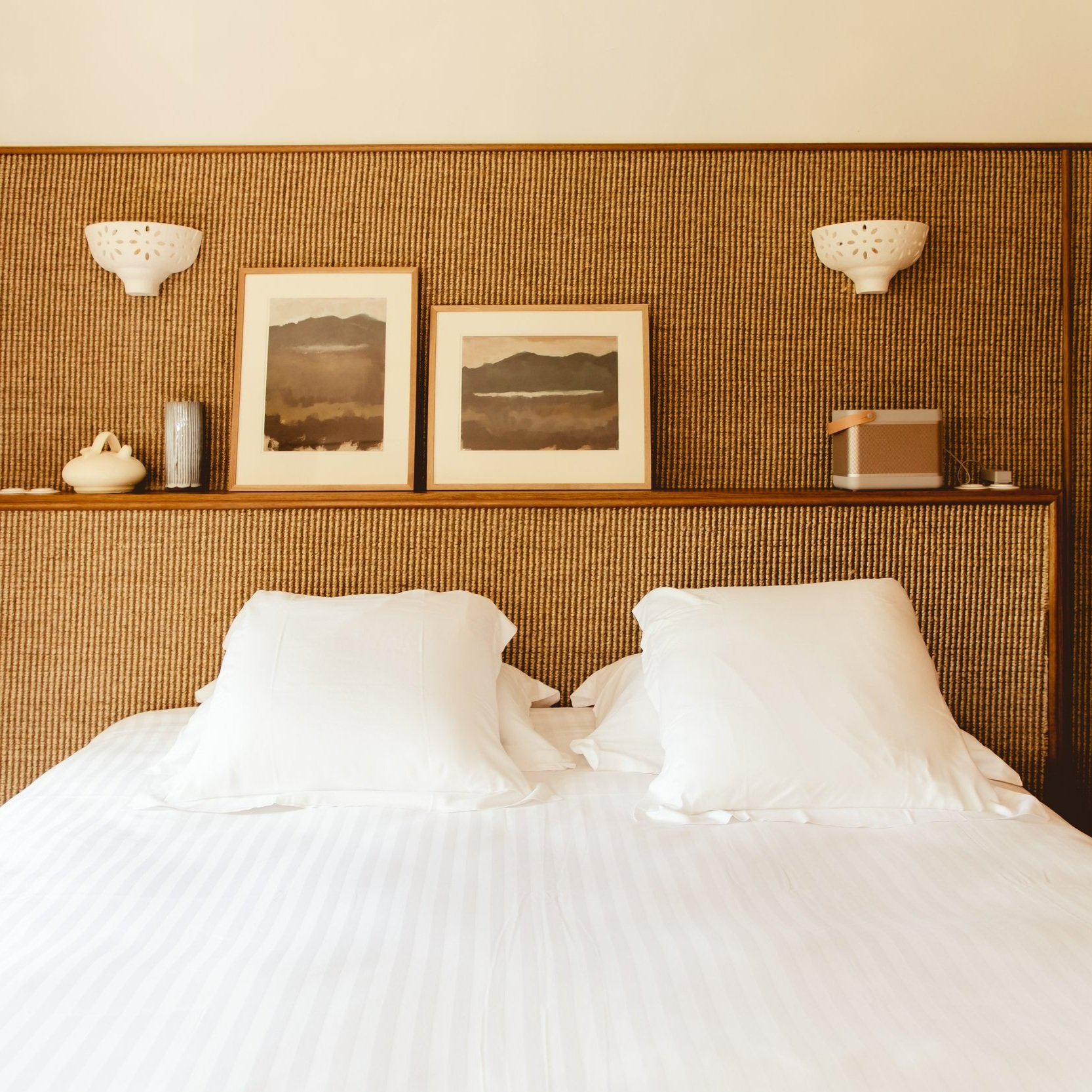
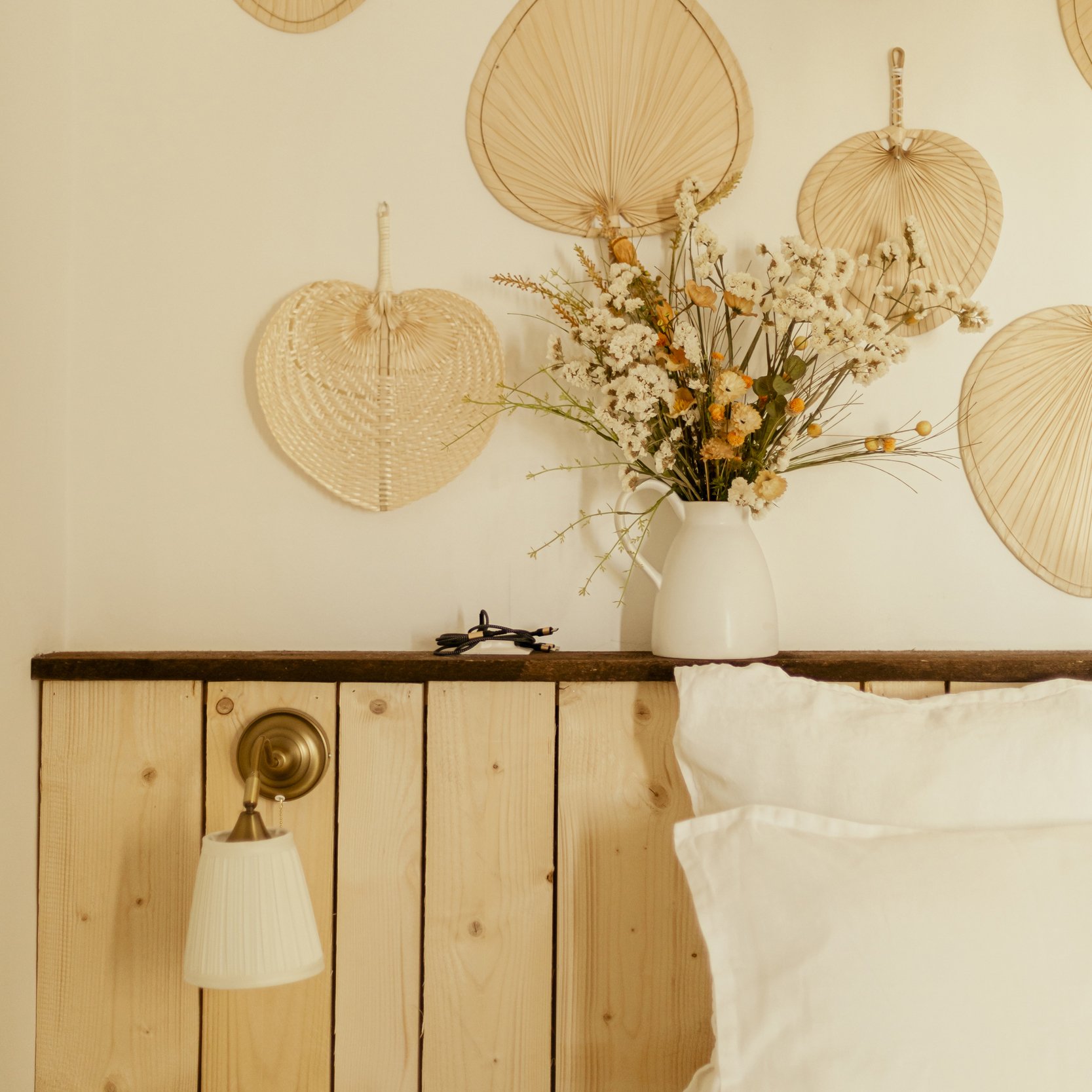






























































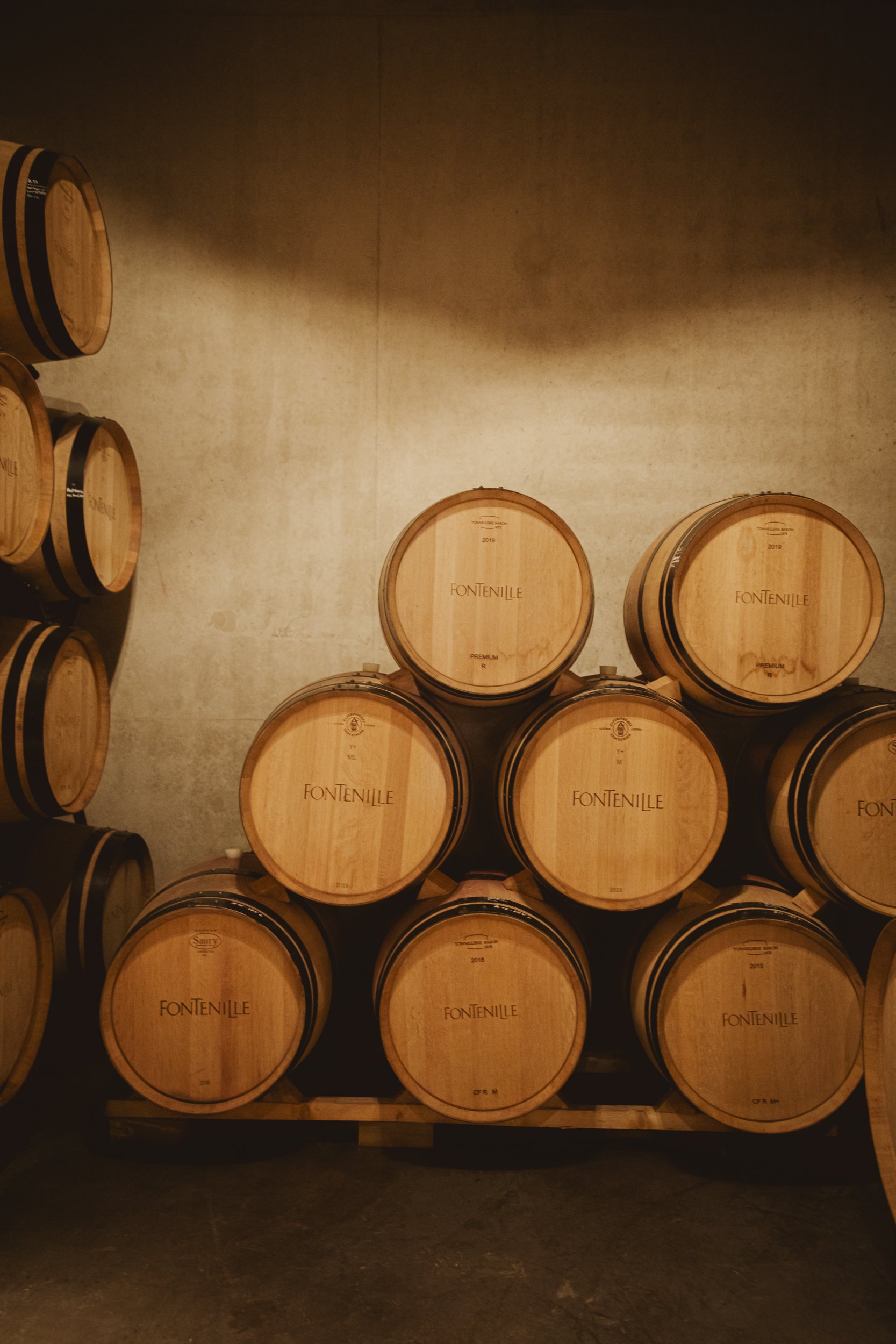

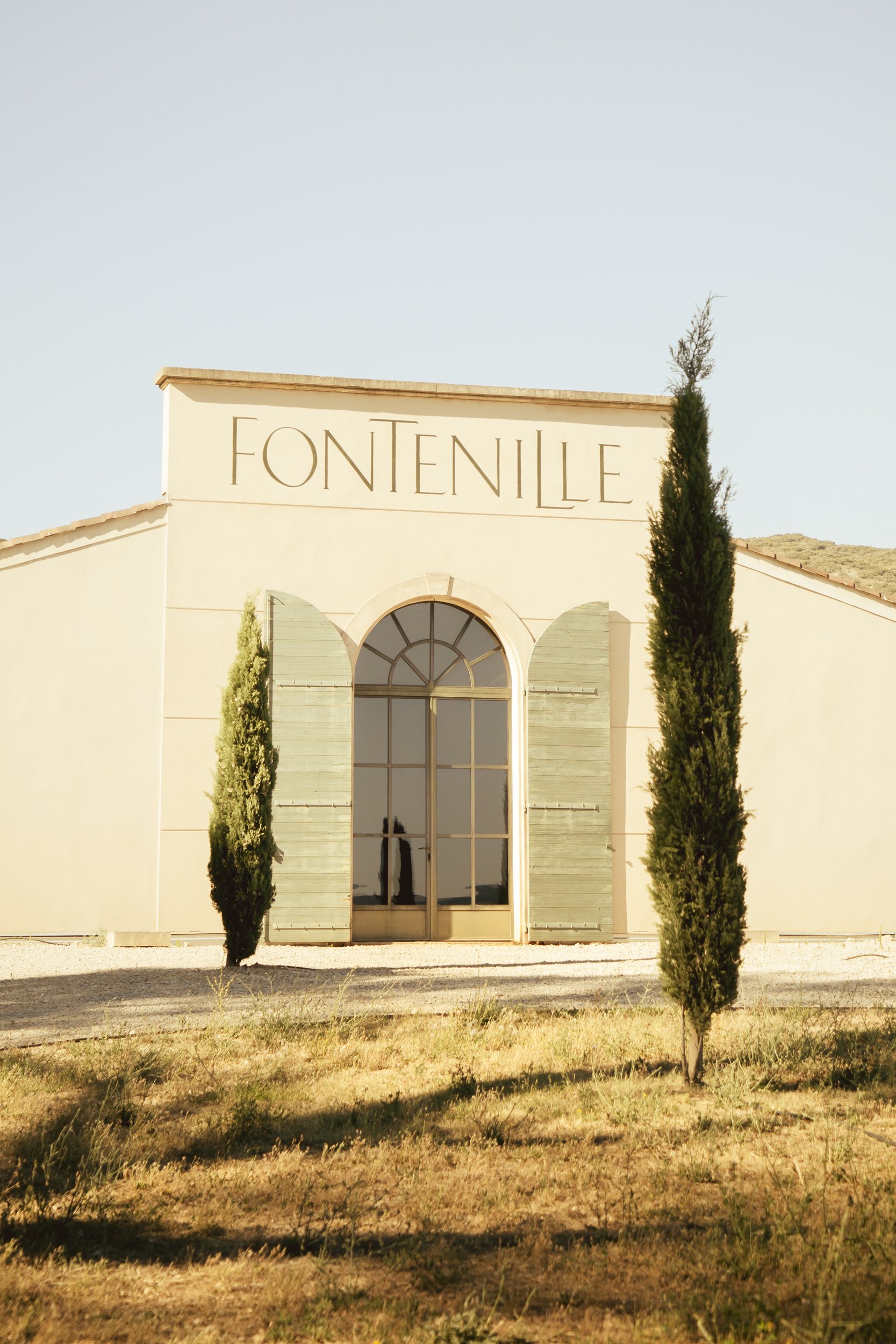








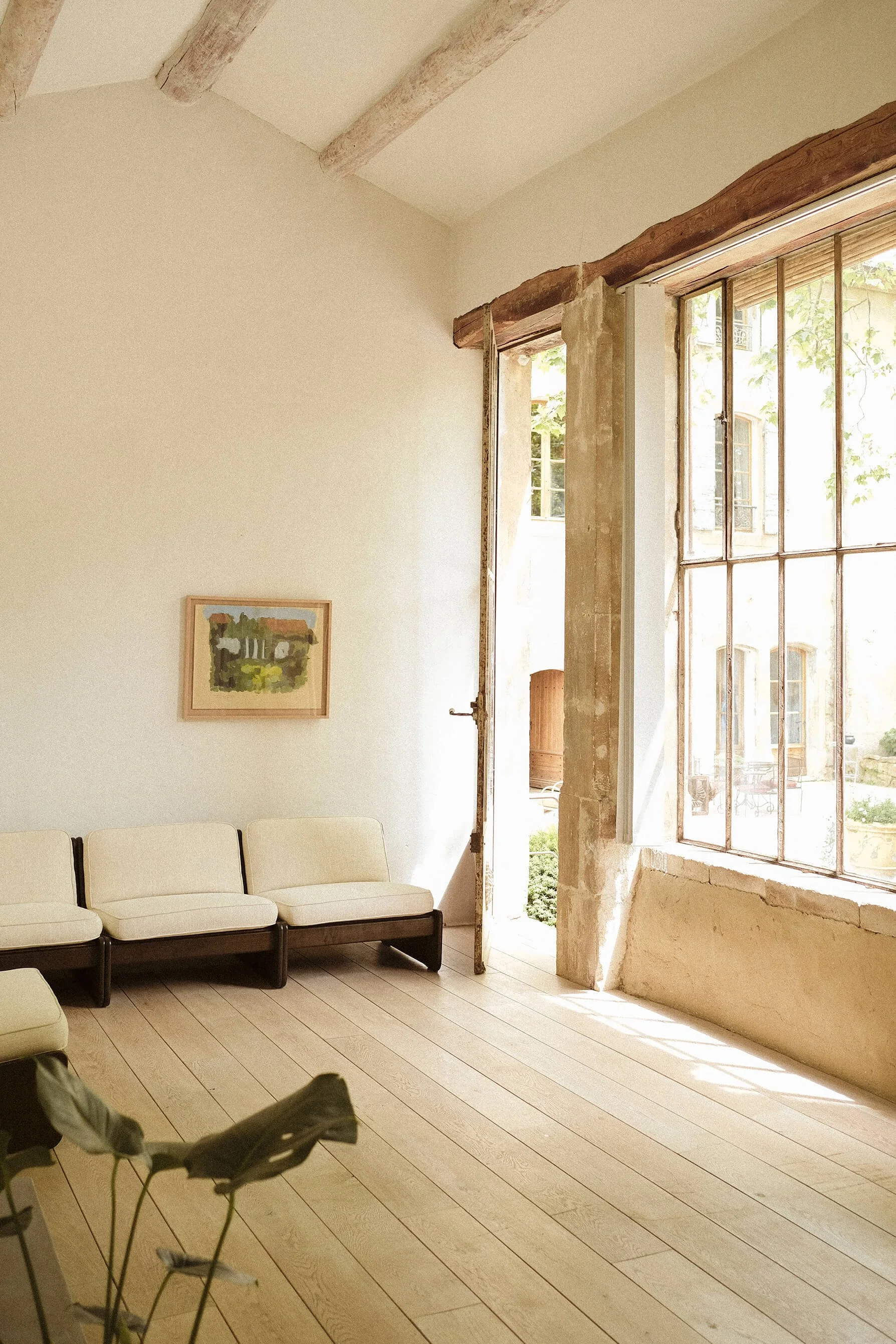








In this Airbnb roundup, we’re sharing our curated list of the prettiest Airbnb rentals to book for your next holiday in the South of France. Our list includes the most beautiful Airbnb properties in both Provence and the French Riviera, from townhouses that sleep two to entire homes that sleep six.